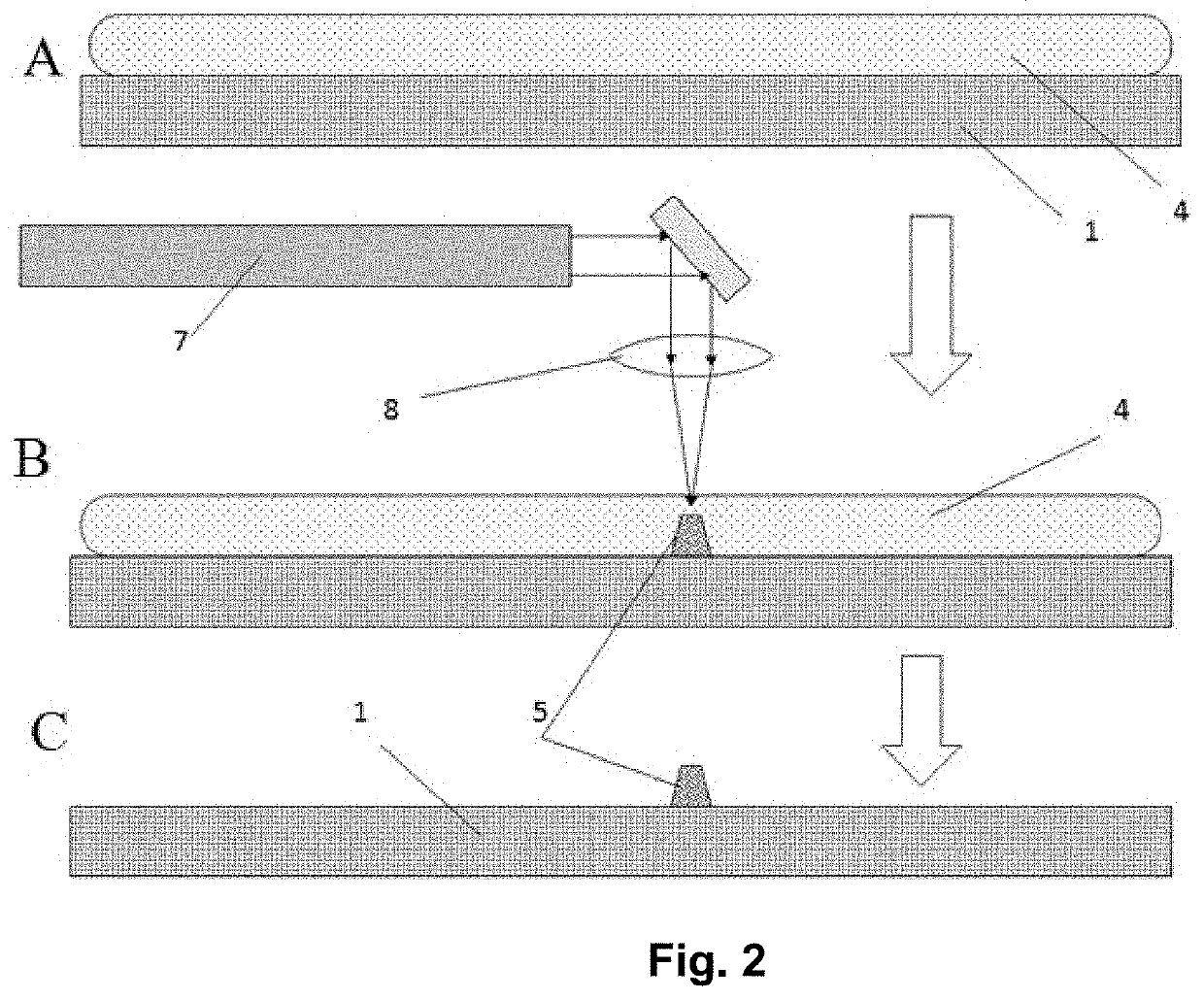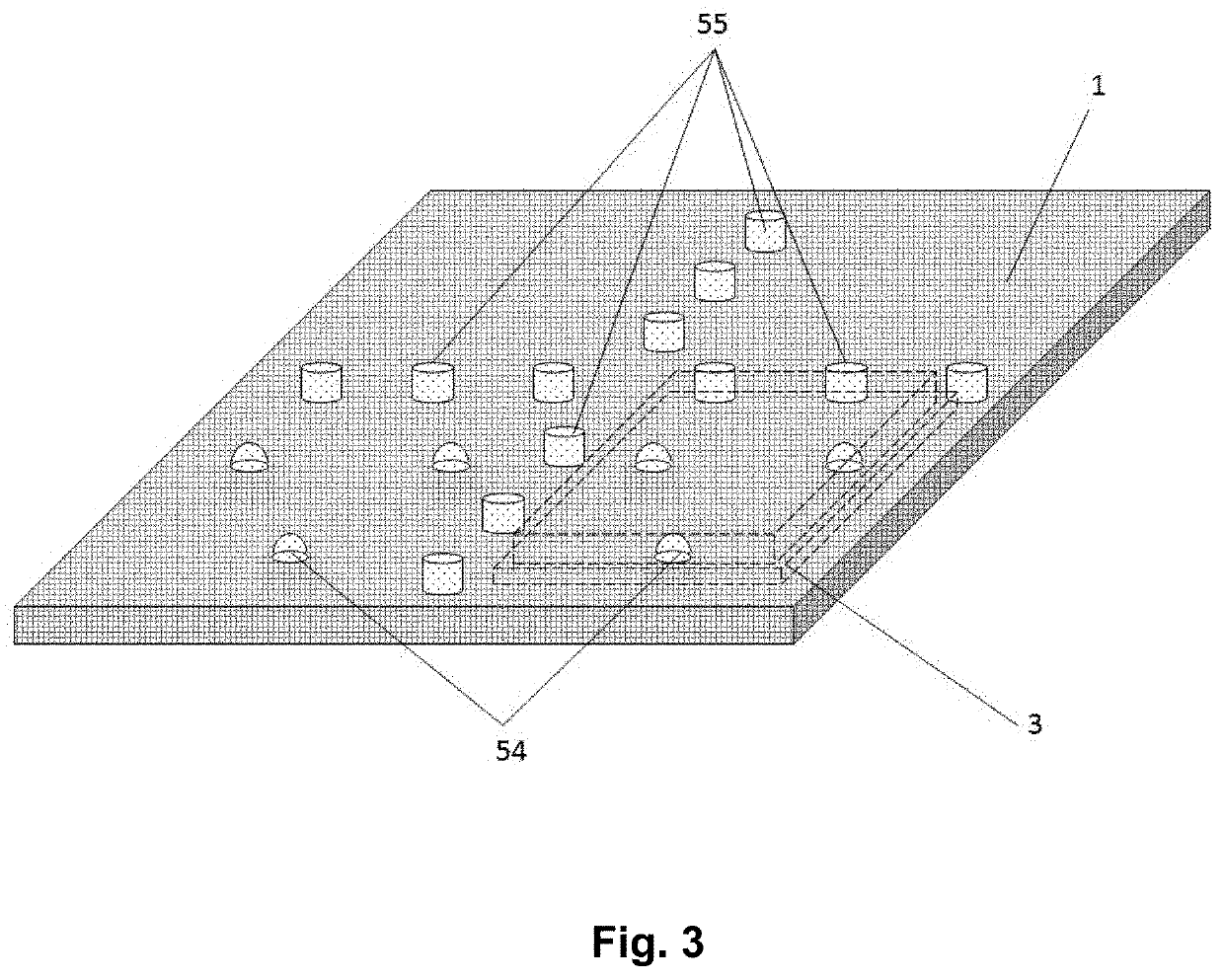Method of mounting a multi-element matrix photodetector
a multi-element matrix and photodetector technology, applied in the direction of electrical equipment, basic electric elements, instruments, etc., can solve the problems of mechanical damage to silicon chips and failure of photoreceivers, and achieve the effects of facilitating the large movement of photoreceiver chips, reducing light loss, and high stability
- Summary
- Abstract
- Description
- Claims
- Application Information
AI Technical Summary
Benefits of technology
Problems solved by technology
Method used
Image
Examples
Embodiment Construction
[0035]The matrix photodetector comprises at least one photoreceiver (3) located on the FOP (1) and fixed with the help of a polymerized (40) liquid optical polymer (4). Description of the method distinguishes the phases of the polymer when indicated by numbers on the figures. In the context of this description, N (4) states to indicate the liquid phase of the polymer, and N (40)—for the cured phase.
[0036]Initially, the liquid polymer is distributed over the FOP area evenly or partially, and then the photoreceiver or several photoreceivers are placed on the surface formed by the polymer. A partial distribution of a polymer is understood to be applied in the required volume on a part of the surface rather than the entire surface, usually in the shape of a drop, oval or dumbbell. In the case of partial distribution of the polymer on the FOP, the polymer spreads over the entire area of the FOP due to the compression forces and the capillary effect. At this stage, photoreceivers can be p...
PUM
 Login to View More
Login to View More Abstract
Description
Claims
Application Information
 Login to View More
Login to View More - R&D
- Intellectual Property
- Life Sciences
- Materials
- Tech Scout
- Unparalleled Data Quality
- Higher Quality Content
- 60% Fewer Hallucinations
Browse by: Latest US Patents, China's latest patents, Technical Efficacy Thesaurus, Application Domain, Technology Topic, Popular Technical Reports.
© 2025 PatSnap. All rights reserved.Legal|Privacy policy|Modern Slavery Act Transparency Statement|Sitemap|About US| Contact US: help@patsnap.com



